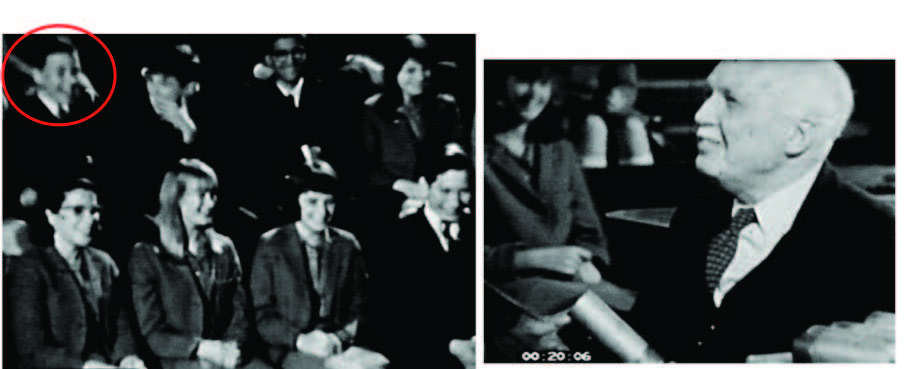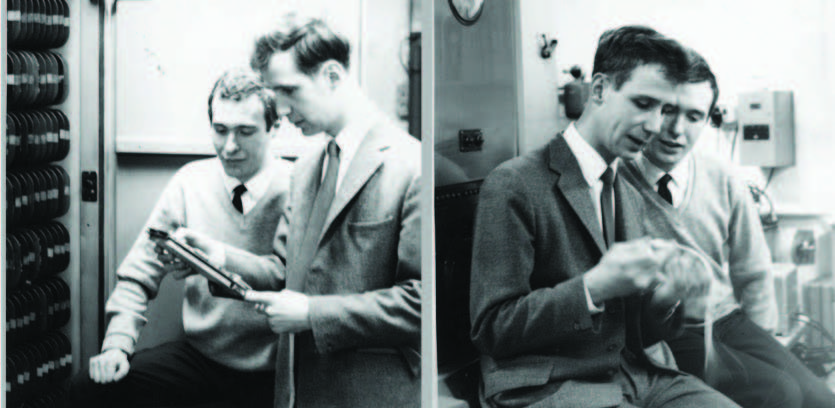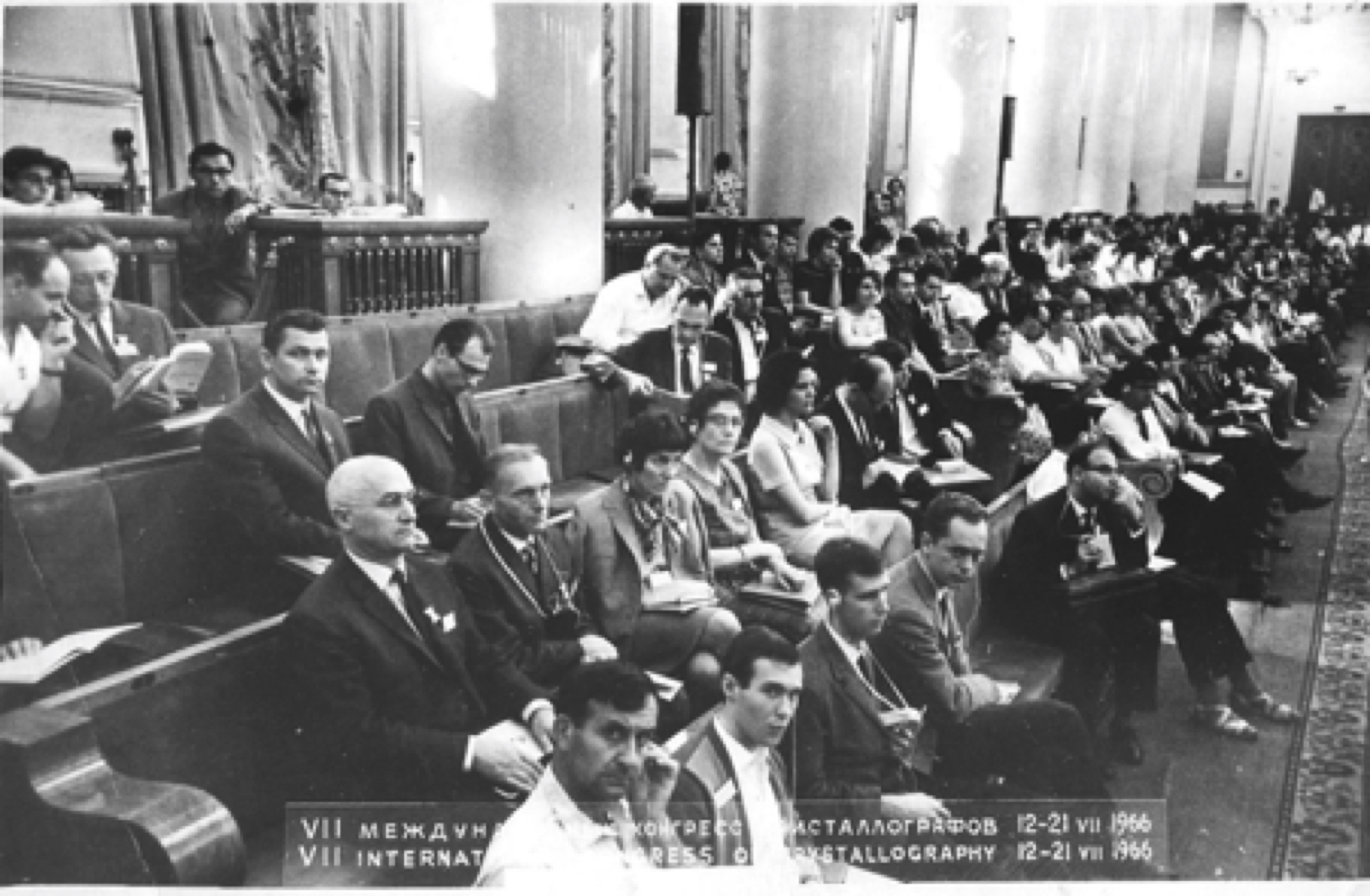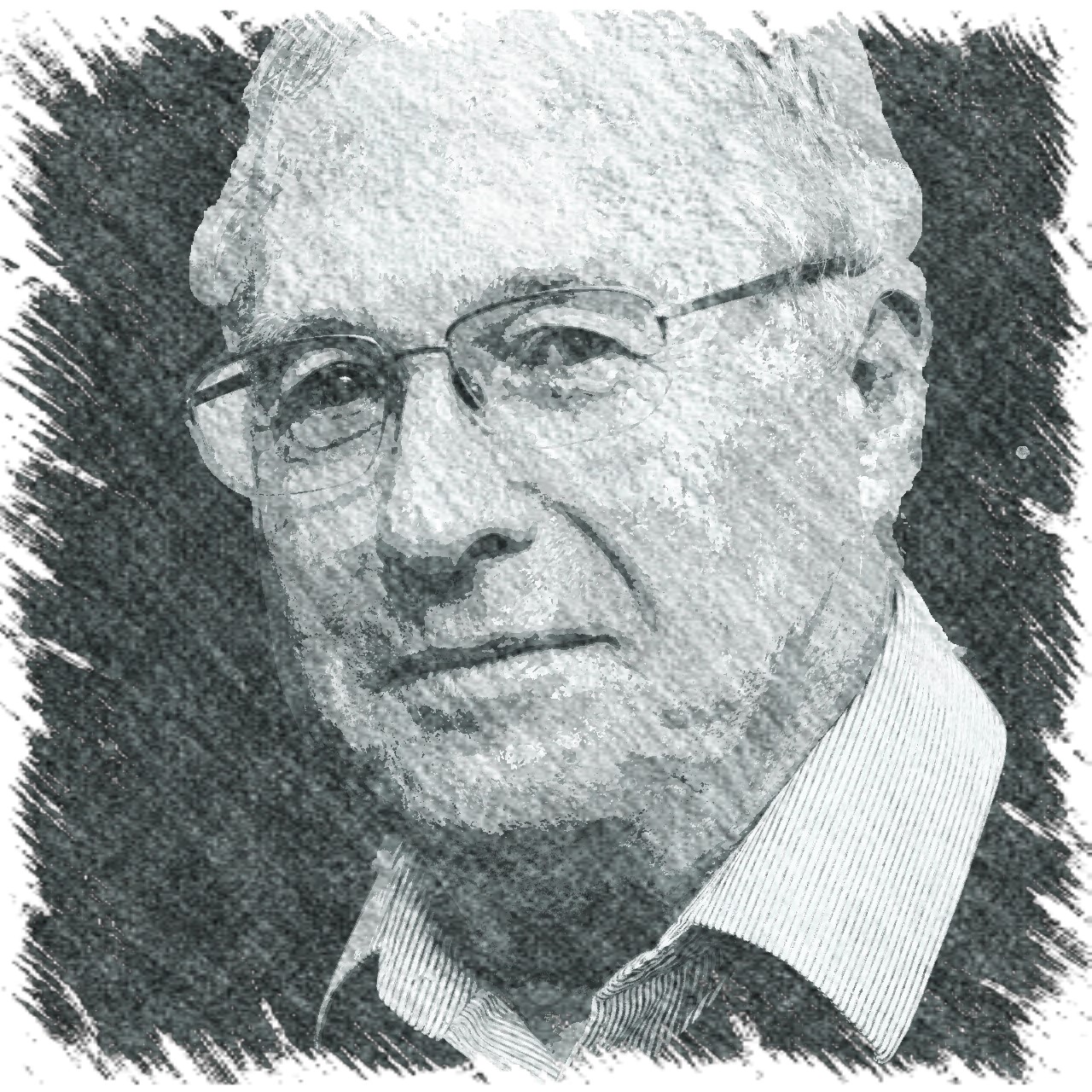- History Home
- People, Leadership & Service
- A Legacy of Excellence
- History & Impact
- Meetings Through the Years
- Resources
Memoir - A. Michael GlazerMemoir | Publications | Curriculum Vitae | Videos | Slides | Articles | Obituary 66 Years in Crystals!2017
I must have been 7 or 8 years old when, walking home from school, I picked up a spherical pebble, and as little boys are apt to do, I threw it on the ground to break it open. I saw that inside there were coloured bands, and when I got home I showed it to my mother. She then went and bought me a book on geology and I identified the pebble as agate or banded flint. I saw in the book many pictures of crystals and thus began my love of crystals. So, I soon learnt that one could see crystals in the Geological Museum in London, and despite my young age I took the underground train by myself into London each Saturday to take a look. I was so captivated by their huge collection that I became a regular visitor, touring all the showcases, learning about minerals and making friends with the curators, who from time to time slipped me some specimens. This became my regular routing virtually every Saturday for several years after. I also used to go on schools’ visits to the Royal Institution (RI) to listen to and watch the great Sir Lawrence Bragg. He loved teaching science to children, especially by showing them demonstrations. During his time at the RI something between 100,000 and 200,000 children passed through that famous lecture theatre. The photograph below shows Bragg demonstrating how to make voice-like sounds with a tube, air and modelling clay. You can see his delight in his expression. Also, there I am (circled) in my school uniform laughing my head off. I guess I must have been about 14 years old then.
The result of spending so much of my time with crystals was that I did very badly at high school, failing some of my key examinations. At the time in Britain there were not as many universities as there are now, and so I found it difficult to be accepted for a university degree. Finally, I was accepted to read chemistry at Dundee in Scotland, which at that time was considered to be a college of the University of St. Andrews. I recall that to gain entry I had to have an interview. They asked me one question: tell us what you know about aluminium. Well, just the week before I had been to a lecture on aluminium at the Science Museum in London and came away with a booklet all about its history, methods of preparation and chemistry!! That was indeed a stroke of luck. Before going up to university I had some time to kill and so I went for an interview with a local military research company, Elliott Automation in Borehamwood. I recall that I was interviewed for this job on a Friday afternoon. I was asked just one question: do you know Ohm’s Law? I said yes and they said, OK you start on Monday. And on Monday I found myself working on three top-secret projects: the Verdan computer for the Hawker-Hunter aircraft, the Blue Steel missile and the aircraft TSR2! In those few months, I learnt a lot about how British industry worked (or rather didn’t). A great deal of money was being wasted and I was not surprised when the government finally cancelled Blue Steel and TSR2. The city of Dundee then was very poor with huge amounts of unemployment, drunkenness and crime. It seemed to me then to be like a scene from a Dickens novel, with children sitting outside pubs at 10.30 at night waiting for their parents to come out and feed them. (I have to say that today Dundee is hugely improved.) The chemistry school was very small, consisting of only 18 final honours students, and in such a small environment and because there was so little else to do, I immersed myself in my studying and eventually came out with a good degree. Now, while I was there I carried out some projects with the local crystallographer Dr. John Iball, and was fascinated with taking x-ray powder photographs of various compounds. It was he who then recommended me to do a Ph.D. at University College London in the research group of Professor Dame Kathleen Lonsdale. My first impression of Kathleen Lonsdale was of a tiny frail looking figure, with a reddish nose suggesting a cold, a huge shock of curly white hair (reminding me of the man on the Quaker Oats package). However, I soon began to appreciate that this was no weakling but a tough and clever person who did not tolerate fools gladly. In October 1965, she asked me to carry out research into organic mixed crystals and so I began the search for the materials that I would have to study. I was given a desk in a small room right next to the area where the group used to make its tea and coffee. Starting at the same time, and seated next to me was the late Howard Flack, and we soon became good friends. He was assigned to work on diffuse scattering in crystals of anthrone and anthroquinone. I finally discovered the topic for my research in June of 1966, the study of phenazine and phenazine-N-oxide mixed crystals, and it turned out that this showed diffuse scattering quite similar to that being studied by Howard. And so we worked closely together. During our first year Mrs. L. (as we used to call her) sent Howard and me to evening classes in crystallography at nearby Birkbeck College. This was a fantastic introduction to the subject. The lecturers there included Harry Carlisle (x-ray camera geometry, direct methods and the Patterson function), Jim Jeffery (crystal optics), Rex Palmer (space groups) and Alan Mackay (drawing crystal morphologies). On a couple of occasions we met with the great J. D. Bernal, who at that time was very ill after suffering some strokes. Kathleen Lonsdale’s group at that time consisted of about 30 people including Judith Milledge (working on diamonds), Marianne Ehrenburg and C.J. Brown (organic crystal structures), Robin Shirley (bladder stones), June Sutor (bladder stones), Jeff Harris and Richard Henriques (diamonds), and several visitors including Maureen Julian (nee O’Donnell) from the USA, Terry Rummery from Canada and Eugene Hoff, a medic from New York. Every now and again Mrs. L would summon us upstairs to her room for a discussion on progress. It always began with a question: where are the Laue photographs? Woe betide any student who appeared in her office without the necessary set of Laue photos!
We were very lucky in her research group as we had for our own personal use a real computer. I think we may have been the only scientific research group anywhere with its own computer. This was a Ferranti Pegasus Mark II machine with 8K of store on a magnetic drum, and 5-hole paper tape. Programming was in machine code. This actual computer was on show in the Science Museum in London (https://blog.sciencemuseum.org.uk/the-pegasus-computer/) and still has a coffee stain on the chair that I left there one night. The photos show Howard and me working on the computer in 1966. It was during my studentship in London that I finally got to meet in person the great Sir Lawrence Bragg a few times, as he visited from time to time. When he was just about to retire from the Royal Institution in 1965, Mrs. L. gave Howard and me a ticket to his retirement lecture. In 1966 Howard and I went with Mrs. L. to Moscow to attend the IUCr Congress where she was standing in as president in place of Bernal, who was too ill to travel. She was able to pay our expenses in Russia because she had some money there from a book she had written on Quakers in Russia. I recall that we arrived at the wrong airport and had to wait for our host, Professor Zhdanov, to come across Moscow to meet us. It was at the height of the cold war, but we found everyone to be very friendly. On the ride into Moscow the interpreter, whose name was Valery Demidov, taught Howard and me several Russian swear words, and from that time most communications between Howard and me started or ended with one of those swear words! The picture shows me sitting in the lecture room at Moscow State University, next to Howard and Terry Rummery. By the way, I have attended every IUCr Congress since.
In 1968 Howard and I published together six papers in Phil. Trans. Roy. Soc. and left University College. Howard went to the Cavendish Laboratory, Cambridge and I to the chemistry department at Harvard. There I worked in the group of Jack Gougoutas on a compound that tended to explode. The interesting thing about this was that you could follow a change in crystal structure that involved turning over of benzene rings without destroying the crystal’s integrity. Two of the people there were John Clardy and Les Lessinger. In 1969 I attended the IUCr Congress at Stony Brook and there I met Helen Megaw from Cambridge. Mrs. L. had suggested that she should meet me and try to persuade me to work for her as a postdoctoral assistant. At first I was dubious about my ability to do this as she was interested in inorganic materials (perovskites mainly) whereas I only understood molecular crystals. Anyway, she was very nice and persuasive and in September 1969 I moved to the Cavendish Laboratory (a different section from Howard though). The head of the Crystallography Laboratory, which had originally been set up by Lawrence Bragg, was W.H. (Will) Taylor, a kindly white-haired gentleman, who had been the first person to solve one of the feldspar structures. The other senior staff members there were Helen Megaw and P.J. (Jane) Brown, with a research group of about 20 people. My first sight of Jane was interesting: I went into a lab to find Jane machining a piece of beryllium on a lathe with beryllium dust everywhere and no obvious protection! Helen gave me the task of building a suitable apparatus to heat a crystal of sodium niobate in order to map out its phase transitions (there are about 6 phases at high temperature). To do this I built a special back-reflection single-crystal camera in which I could move the film while automatically raising the temperature. By careful selection of an oscillation range a plot of the spots at very high angle nicely showed all the phase changes, and Helen and I were able to publish a few papers around that. Now another interest of Helen at that time was in understanding what happens if you take an octahedron in the perovskite structure and tilt it. Because each octahedron is linked to each other through its vertices the answer seemed to be impenetrable. Helen asked me to look into this. A previous visitor, Jim Brandon, had been looking at this I think with regard to calcium pyroniobate and he had sketched an approach to this problem in terms of tilting about a crystallographic axis. This suggested to me a way of generalising the problem in a very simple way: tilting about each axis in turn. I discovered that in terms of the signs of tilt there were 10 possibilities and that when you allowed for different magnitudes this became 23 (some years later application of group theory showed that in fact there were 15 unique solutions). I devised a notation to describe the various tilts and this is now standard in the perovskite literature. In fact it has become so standard, that I often see papers that use it but no longer bother to refer to the original paper (so much for citation indices). I was very pleased at the time to discover in this way another cubic perovskite structure in which there were equal tilts about three axes. There is a funny story attached to my 1972 paper on the tilt systems. I sent it into Acta Cryst. for publication and eventually received a referee’s report: six pages of closely typed comments and criticisms! I was furious and went to Helen in a bad temper, cursing and using several choice words. (I was young and impetuous then, not the kind and loveable character I am today.) Helen calmed me down and offered to help me deal with the comments, and I had to say that at the end the paper was much improved. I sent it back to the editor and received two more pages of closely typed comments. Again Helen had to calm me down and help me. This was the paper that was finally published and is to date my most quoted publication. A few years later when Helen retired, she confided in me that she had been the referee! After she retired I became the Head of the Crystallography Laboratory, but I did not hold a permanent position in the Cavendish Laboratory. This was a difficult time because we were under pressure to leave the Cavendish Laboratory and I had to learn how to head off actions by the Cavendish Professor who wanted to get rid of us. I discovered that the workshop personnel and the secretaries were always the first to know what was happening and so they used to tip me off regarding an impending action. Fortunately, in 1976 I was appointed to a Lectureship in Physics in the Clarendon Laboratory in Oxford and at the same time to an Official Fellowship and Tutorship at Jesus College Oxford. Kathleen Lonsdale, when she was in hospital with a terminal illness, wrote several letters of recommendation for her favourite students, and so I was able to use this to secure my position in Oxford. So, in 1976 I moved the Crystallography Group to Oxford including all the records, people and equipment. At that time the Clarendon Laboratory was in a very poor state compared with Cambridge. I was the first person to be appointed from outside in 23 years and there were only two research groups that I could see were doing first-class research. A little later W. (Bill) Mitchell from Reading University was appointed as head of department and set about transforming the whole laboratory with considerable success. Most of the research done in my group then was on the relationships between crystal structures and physical properties and over the years up to my official retirement in 2000 there were a total of 30 research students, and following in the Bragg tradition, almost one half were women. One topic that we worked on with colleagues in Kraków, Poland was on the relationship between optical activity and crystal structure. We were able to explain the link between the two for all the crystal structures studied in relatively simple terms. This was a most successful collaboration; however, in December 1981 martial law was declared by the Jaruzelski government and all connections between Poland and the rest of the world were severed. In May 1982 I was finally allowed into the country to visit my colleagues. Conditions were very bad, little food, empty shops, long queues everywhere, tanks in the streets and a curfew. There was little work that we could do except sit at a table telling jokes. Back in Oxford I was contacted by Professor Z. Pełczynski to set up the so-called the Oxford College Hospitality Scheme for Polish Scholars. The idea was to be able invite Polish academics to Britain for short visits. I was to deal with scientists while he and another person, Kathy Wilkes, were to deal with the humanities. We persuaded all the Oxford Colleges to agree to give a room and food for one or two months a year. The Foreign and Commonwealth Office agreed to fund the visits and somehow, Pełczynski managed to persuade the military government in Poland to allow us to invite academics without governmental interference. The result was that we were in the unique position for a while to make our own decisions on who could come from a communist country to the UK without the need for special permissions or visas! This scheme was later enlarged to cover the other socialist countries including the Soviet Union, and George Soros gave us money to support this venture. Ten years after establishing this scheme we were all invited to Warsaw for a celebration. The communist government by then was no more and we were received by Lech Wałęsa, President of Poland, and given the National Medal of Education. In 1986 I wanted to construct apparatus for cooling crystals in an x-ray beam. The available techniques then were most unsatisfactory, with temperature oscillations of several degrees, a minimum temperature of about 150 K, massive use of liquid nitrogen and flimsy apparatus. I joined forces with John Cosier, whose expertise was in looking after the laboratory’s low-temperature facilities, and we came up with a unique design, which we called the Cryostream. Suddenly we had a small device capable of going down to 77 K with a stability of 0.1 K, easy to use and thus making low-temperature crystallography hassle-free. We started to construct Cryostreams in the basement of our laboratory but such was the demand by customers that we then set up Oxford Cryosystems to the northwest of Oxford, and John left the Clarendon to carry on with construction and design. I dealt mainly with the business side, marketing, demonstrating and accounts. Looking back, I realize that we were extraordinarily lucky in coming out with the Cryostream when we did, because this coincided with the discovery of flash-cooling of protein crystals, and so sales rocketed. As of today, Oxford Cryosystems remains the primary distributor of equipment for low-temperature x-ray crystallography. My research continued in Oxford, especially dealing with the structures and properties of an important perovskite piezoelectric material, PZT (I started this research some 45 years ago). Even now that I have been retired more than seven years I continue to work on this problem, and I think that we have finally reached a solution to explain how the piezoelectric activity arises from the structure. It turns out to be very complex involving elements of short- and long-range structure that vary with composition. In 2012 I was awarded the Czochralski Medal in Warsaw by the European Materials Research Society for my work on perovskites. I don’t normally go in for honours personally but since my friends had worked so hard to propose me for this and it was, after all, in Poland, I decided to accept it. One of our publications (Nat. Commun. 5, 5231, 2015) on the structures of PZT was awarded the Spriggs Award by the American Ceramics Society in 2015. Throughout my career I have carried out a considerable amount of work for the IUCr, as a journal editor, main editor and as a member of the Finance Committee. I was pleased during the Montreal IUCr in 2014 to be voted in (though by one vote!) as vice-president.
Mike Glazer’s academic family tree: https://academictree.org/physics/tree.php?pid=99523
|




